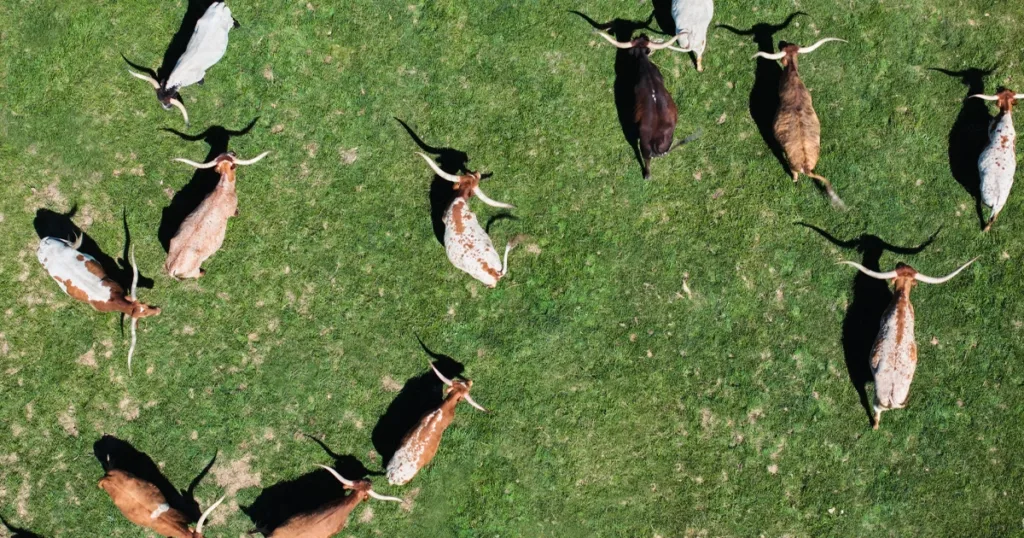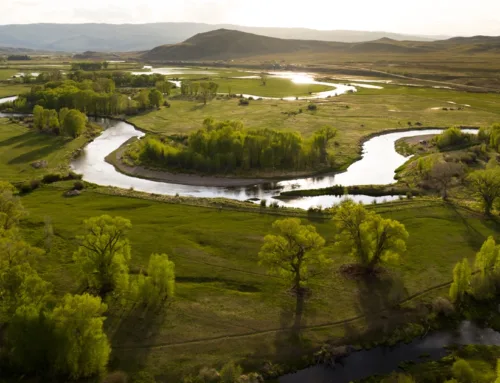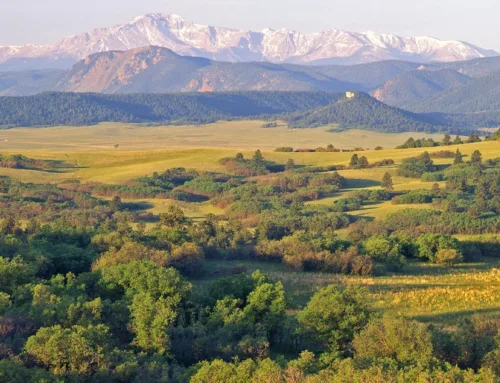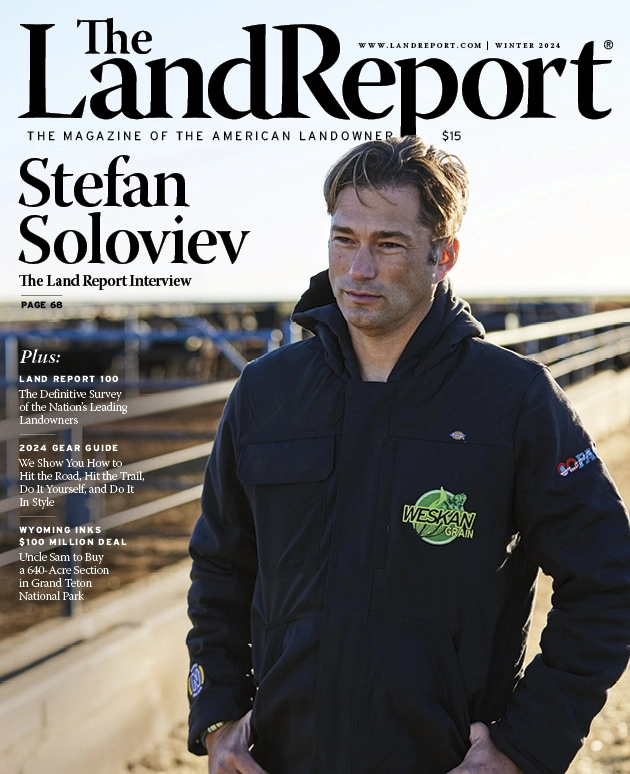Rex Glendenning — the King of Dirt
Rex Glendenning — the King of Dirt
By Henry Chappell
Photography By Gustav Schmiege III
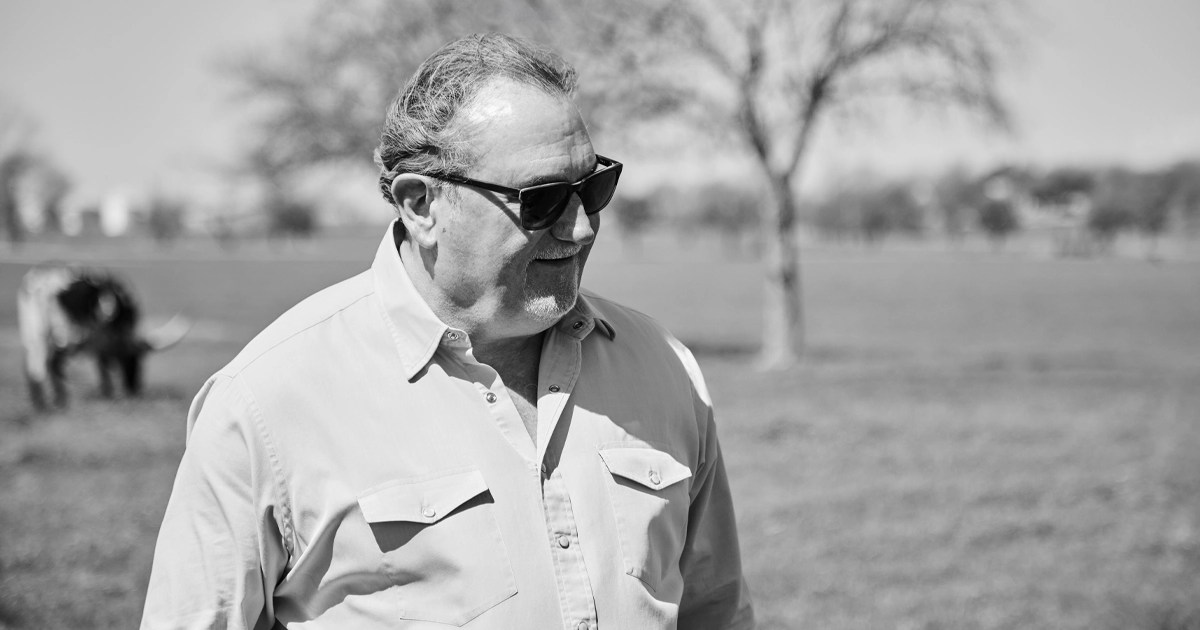
LR_King of Dirt
NORTH TEXAS NATIVE. Rex Glendenning mixes and mingles with his beloved Longhorns on his Collin County farm.
In 1985, a twentysomething broker by the name of Rex Glendenning closed a transaction in Collin County with a wily character named J.B. Hunn. A shrewd trader, Hunn offered to pay the up-and-comer half his commission in Longhorn heifers.
“J.B. was the consummate salesman and quite a personality,” says Glendenning. “He would try to trade you out of your socks. I told him I didn’t want his damn Longhorns. He kept after me, and I said, ‘J.B., you didn’t hear me.’ ”
Turns out Hunn heard him all right. Glendenning kept his socks, and he also ended up trailering four Longhorn heifers off Hunn’s Choice Acres Ranch. Glendenning quickly assured his wife that the next stop for those Longhorns would be the sale barn the following Saturday. That never happened. By the end of the week, Rex and Sherese Glendenning had come down with Longhorn fever.
“Those heifers have probably cost me $25 million over the last 40 years,” Glendenning says over a barbecue lunch at the Frisco office of REX Real Estate. Fortunately for the Glendennings, during that same timeframe, he and Sherese have brokered several billion dollars worth of land, many involving ground that his family has known and worked for generations.
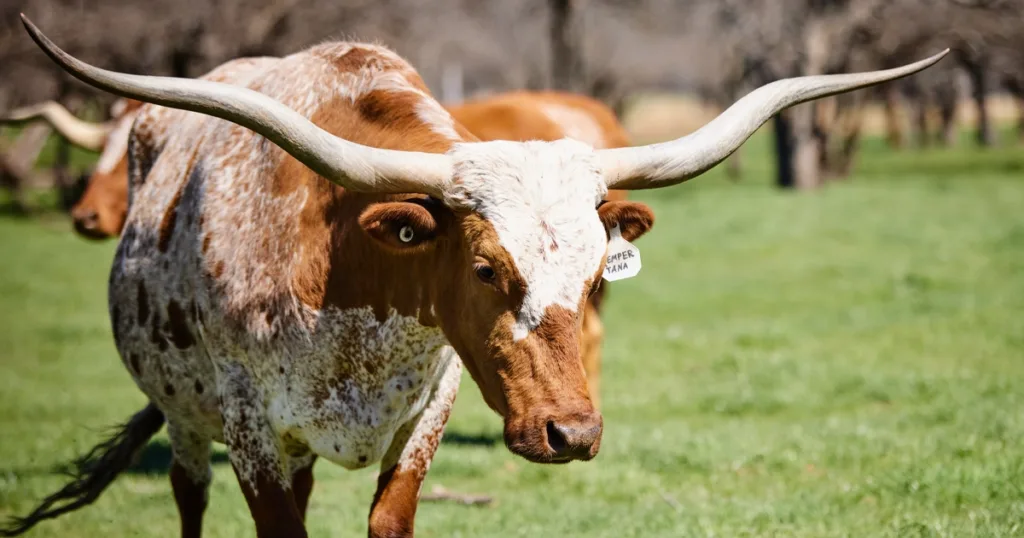
TEMPER TANA. Glendenning Farms has developed a breeding program that emphasizes “putting the long horns back on your Longhorns.”
Rex’s great-grandfather, Alexander Glendenning, quit Scotland for the Lone Star State in 1887. Thanks to the Homestead Act of 1862, he was able to stake his claim to a 160-acre tract outside a speck of a town called Celina, 40 miles north of Dallas. Since then, four generations of Glendennings have witnessed firsthand the transformation of the Blackland Prairie from native grassland and bumper crops of cotton and herds of cattle to sprawling business parks, cutting-edge medical centers, high-end residential developments, and — thanks to Rex — world-class professional sports facilities.
Alexander Glendenning worked his 160 acres from before “can-see” to after “can’t-see.” His homestead sustained his wife and their 11 children, including Rex’s grandfather “Daddy Tom.” By the time Thomas John Glendenning turned 14 in 1901, the youngster owned 40 mules. No wonder he quit school. Sixty years later, Craig, Don Mark, and Rex worked alongside their grandfather beneath the broiling North Texas sun, stooping to fetch green cotton bolls, chucking them onto a trailer, and turning them with a pitchfork until they opened. It’s hard to forget such backbreaking work. It’s a lot easier to remember the $150 payday the three boys shared.
Don Glendenning continued that tradition. “My dad entrenched in me a love of land, of dirt,” Rex says. “He never went to college. He farmed and ranched. Dryland cotton farming. Cattle. To make ends meet, he traded farm machinery. When I was 13, he’d throw me the keys to a Cadillac or a Lincoln, and we’d leave Dallas, get on I-20, and I’d drive 90 miles an hour past Shreveport to Vidalia, Louisiana, and Natchez, Mississippi. We’d call on the International Harvester dealer and then the Case dealer, and we’d buy equipment and truck it back to Celina. I’d watch Dad and the sales manager try to swap each other’s boots off. I learned how Dad swapped, how he held people’s attention, how he treated people and made them feel good about what they were doing.”
Don Glendenning also taught his son a few tricks of the trade. In the late 1960s and early 1970s, Coors Beer wasn’t distributed east of the Mississippi River. So the Glendennings would stop at a Cork & Bottle just before the Louisiana line and pick up eight or 10 cases of Coors Banquet Beer.
“When Dad could see that he was about to close a good deal, he’d give me a little wink. I’d go pop the trunk, grab a case of the “yellow belly,” and leave it on the floorboard of the sales manager’s pickup. That was our calling card,” Glendenning says.
In 1974, Glendenning and a few other farm boys powered the Celina Bobcats to the town’s first state football championship. Glendenning’s motivation for his 26 tackles in the big game came in part from Don Glendenning, who promised his son a new car if he won a football scholarship. The following year, the college freshman drove a brand-new Pontiac Grand Prix to Denton to play for the Mean Green — North Texas State — under the legendary Hayden Fry.
“It took me two years before I made a respectable Division I college football player. I’m a slow learner, but when it sinks in, it sticks,” he says with a smile.
Glendenning graduated with a business degree. His focus? Real estate, of course. He drove straight home to Celina and began selling land for Dan Christie at Collin County Land Company. In his best year, he sold 68 properties to service personnel buying property with $20,000 grants from the Veterans Land Board.
“These were all honorable people looking for a little piece of the American dream. I showed them around and told them about growing up in Collin County,” he says. “I decided that if I could sell a $20,000 plot, I could sell a $10 million property.”
In 1983, he and his brother Craig founded North Texas Land. They were just building up a head of steam when the savings and loan scandal gutted Texas real estate markets. Glendenning remembers one 300-acre tract that had changed hands for $32 million. He resold it for $3 million. As the market collapsed, so did the brothers’ land company.
Decades later, Glendenning recalls an unexpected kindness, a letter that arrived in his mailbox. It bore the return address of Dallas’s venerable Henry S. Miller Co. The sender? Robert Grunnah, president of the blue-chip firm’s investments and land division.
“Robert sent me a handwritten note. Then he called me and gave me a much-needed pep talk. He told me to stay the course. To hang in there. He told me I was an up-and-coming young gun, that our market was cyclical, and that things would work out,” Glendenning says.
In 1987, Rex and Sherese shook off the blues and founded REX Real Estate with a single goal: to conquer the Lone Star State. In the years that followed, Glendenning orchestrated the 1,600-acre deal that brought Samsung to Pioneer Business Park in Austin. REX Real Estate brought the Jones family to Frisco in 1994 to purchase Starwood on the Dallas North Tollway — the first of Blue Star’s three master-planned subdivisions. He assembled nearly 39,000 acres along Highway 59 near George Bush Intercontinental Airport in Houston. He sold the 14,000-acre Briggs and Stephens Ranch outside of San Antonio.
Ultimately, he began to question why he was traveling the length and breadth of Texas when the country’s hottest real estate market was in his own backyard.
That point was hammered home in 2013 when Nebraska Furniture Mart passed on a prime 91-acre site along the Dallas North Tollway that was owned by the city of Frisco. Glendenning recognized an ideal locale for the Dallas Cowboys world headquarters. There was a teeny, tiny hitch: The Joneses were days away from inking a deal for the old Texas Stadium site in Irving. Glendenning and his business partner Matthew Kiran kicked it into high gear, had their architect draw up plans, and pitched Jerry and Stephen Jones and Joe Hickman on the concept two days later.
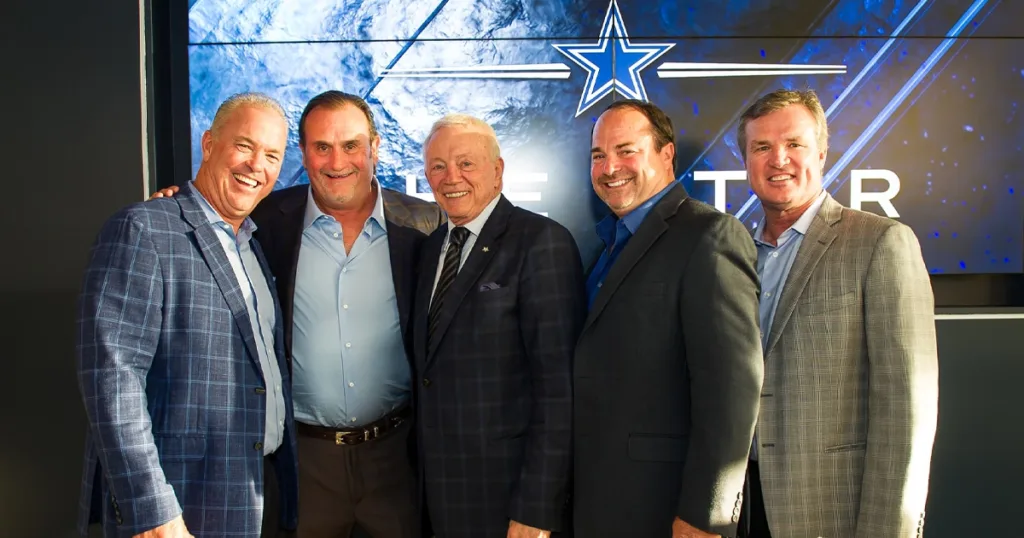
RIBBON CUTTING. Rex Glendenning (second from left) and his business partner Matthew Kiran (second from right) join Stephen Jones (left), Jerry Jones (center), and Joe Hickman (right) of Blue Star Land at the kickoff for The Star in Frisco, Texas.
That project, now known worldwide as The Star, became a multibillion-dollar mixed-use development that includes 1.5 million square feet of office space, 225,000 square feet of retail space, a 300-room Omni Hotel, 170 luxury apartments, the Dallas Cowboys world headquarters, and the Ford Center, the team’s practice arena. Currently valued at $4.8 billion, that figure will more than double to $10 billion at total build-out. Glendenning chuckles at the thought of the long list of investors who shunned that same ground.
The COVID-19 pandemic provided another learning curve. “Everybody said the pandemic would be horrible for business,” Glendenning says. “People dropped deals in March, April, and May 2020. Then about June, we realized things were turning the other direction. Sherese and I stayed right here in this office by ourselves and just kept going. In the first 18 months of the pandemic, we brokered $1.1 billion in real estate, including the 4,000-acre Veale Ranch in Fort Worth.”
Rex credits Sherese for much of the firm’s success: “My wife is an incredibly hard worker and damn smart.” Since day one, she’s kept the books.
Today, REX Real Estate is focused on “the mother lode,” a narrow stretch between the Dallas North Tollway and Highway 289, aka Preston Road.
“When I got into business in 1980, you couldn’t drag anybody north of Highway 121,” he says. “That line was like the equator. Then we finally pulled somebody across, and the whole area blew up. The first deal I ever did with Jerry Jones was Starwood in Frisco in 1994. There were 6,300 people living there. Today, the population is more than 200,000.”
With the construction of the Dallas North Tollway up to Highway 380, rapid growth in this corridor is a near certainty as it marches north to the Red River. Glendenning predicts the next hot spot will be Gunter, 10 miles farther north. He predicts the trend will continue all the way to Pottsboro at Lake Texoma.
With the exception of his years at North Texas State, Glendenning has lived his entire life in Celina. In 1991, he and Sherese bought 156 acres a mile south of Alexander Glendenning’s homestead. They lived in an historic farmhouse while their current home was being built. In the three-plus decades since, the couple raised three children, bought more land, bought some more land, and now own roughly 3,000 acres, including some just off Glendenning Parkway.
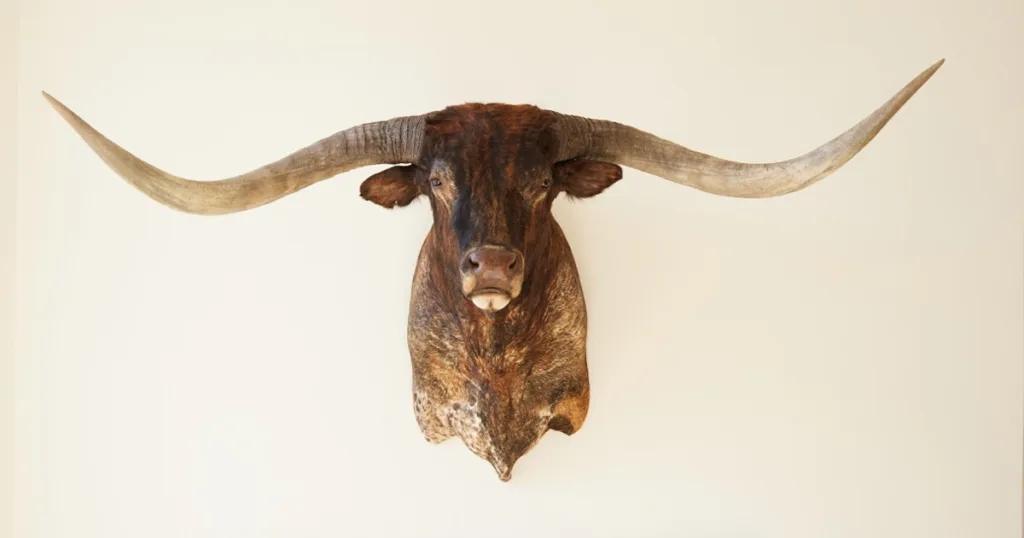
DRAG IRON. Glendenning Farms was home to this gentle giant, one of the greatest bulls in Longhorn history.
You already know what they stocked on those acres: Texas Longhorns. One of them, Inez of El Campo, was bred to Colorado Cowboy and produced the legendary herd sire and horn-spread world record holder G-Man. G-Man sired Heavy Hitter, another world record holder. Then they purchased Drag Iron, a 2,200-pound, butterscotch-brindle bull considered one of the top herd sires of all time.
Naturally, they attended dozens of Longhorn sales. One stood out above the rest. “In 1984, we were young, dumb, and broke,” Glendenning recalls. “We pulled into Red McCombs’s Fiesta Sale down in Johnson City. As I got out of the car, a helicopter landed, two mariachi bands were playing, and three margarita setups were going nonstop. The top Longhorn bulls in the industry were lined up in pens. I looked around and said to Sherese, ‘Damn. If you’re going to do this thing, this is the way to do it.’ ”
That’s exactly what the Glendennings have done. After the former owner of the San Antonio Spurs and the Minnesota Vikings died in 2023, the McCombs family passed the torch to Rex and Sherese. More than 300 guests attended the first Glendenning Farms Fiesta Sale in 2024. This year, a 9,600-square-foot pavilion and expanded parking area will welcome an even larger crowd the first weekend in May. True to Red McCombs’s 50-year tradition, guests will be greeted by mariachis and margarita machines.
“To me, the Longhorn personifies what is best about the people who came to Texas. They were looking for freedom. They were looking for something better. And they adapted to the conditions they found. These cattle evolved on their own over five centuries under harsh conditions to become the toughest, most disease-resistant, long-lived cattle in the world. Their calf mortality rate is virtually zero. Longhorns served as currency. They helped build this country. I can imagine a time when they could make a strong comeback,” Glendenning says.
And when that comeback occurs, rest assured that Rex Glendenning will be more than willing to sell you all the Longhorns your heart desires and your checkbook allows. He’ll also set you up with a fine piece of property for your herd. And after the two of you finish haggling, don’t be surprised if a case of Coors Banquet Beer magically ends up on the floorboard of your car.
